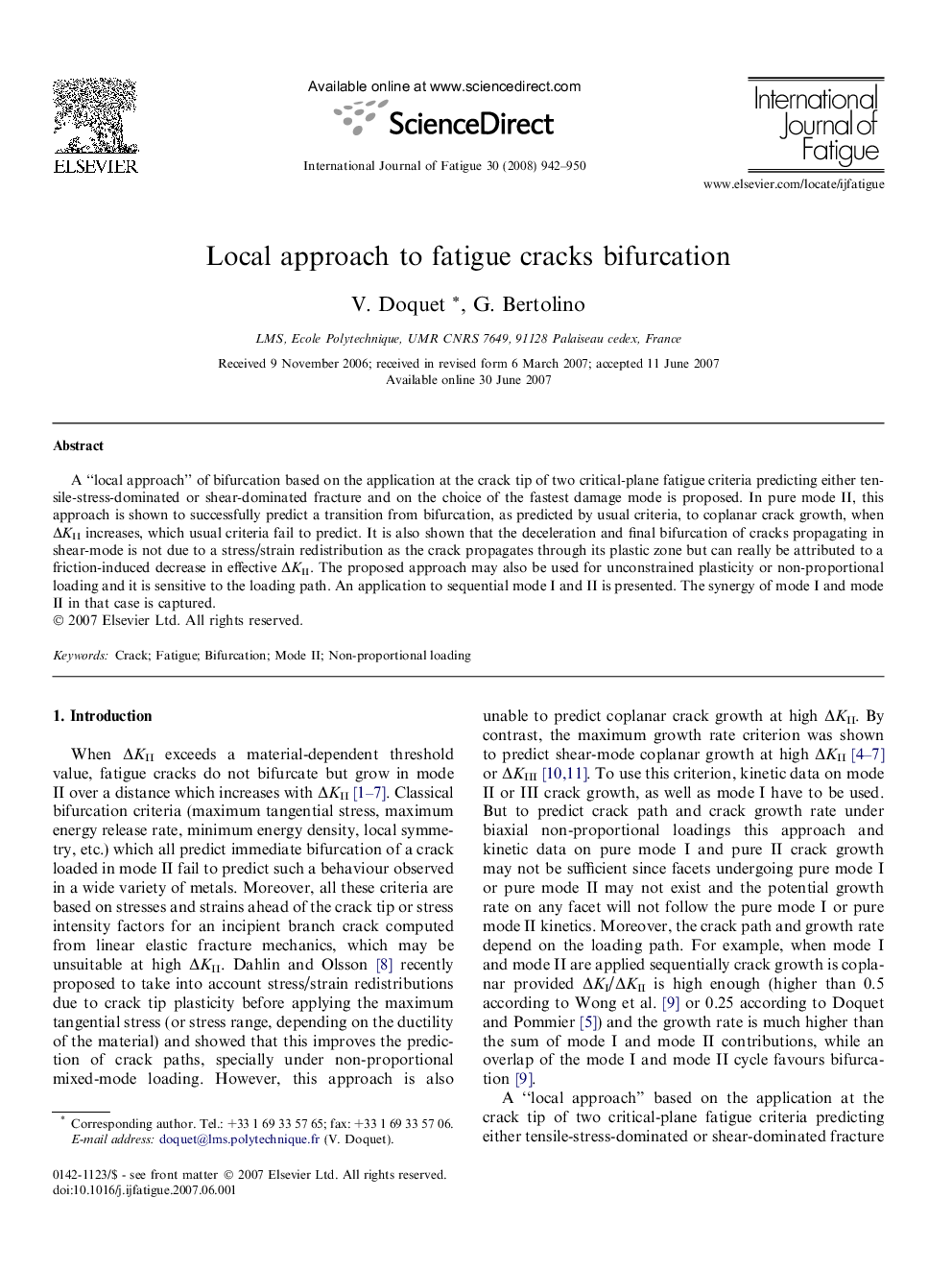| Article ID | Journal | Published Year | Pages | File Type |
|---|---|---|---|---|
| 777902 | International Journal of Fatigue | 2008 | 9 Pages |
A “local approach” of bifurcation based on the application at the crack tip of two critical-plane fatigue criteria predicting either tensile-stress-dominated or shear-dominated fracture and on the choice of the fastest damage mode is proposed. In pure mode II, this approach is shown to successfully predict a transition from bifurcation, as predicted by usual criteria, to coplanar crack growth, when ΔKII increases, which usual criteria fail to predict. It is also shown that the deceleration and final bifurcation of cracks propagating in shear-mode is not due to a stress/strain redistribution as the crack propagates through its plastic zone but can really be attributed to a friction-induced decrease in effective ΔKII. The proposed approach may also be used for unconstrained plasticity or non-proportional loading and it is sensitive to the loading path. An application to sequential mode I and II is presented. The synergy of mode I and mode II in that case is captured.
